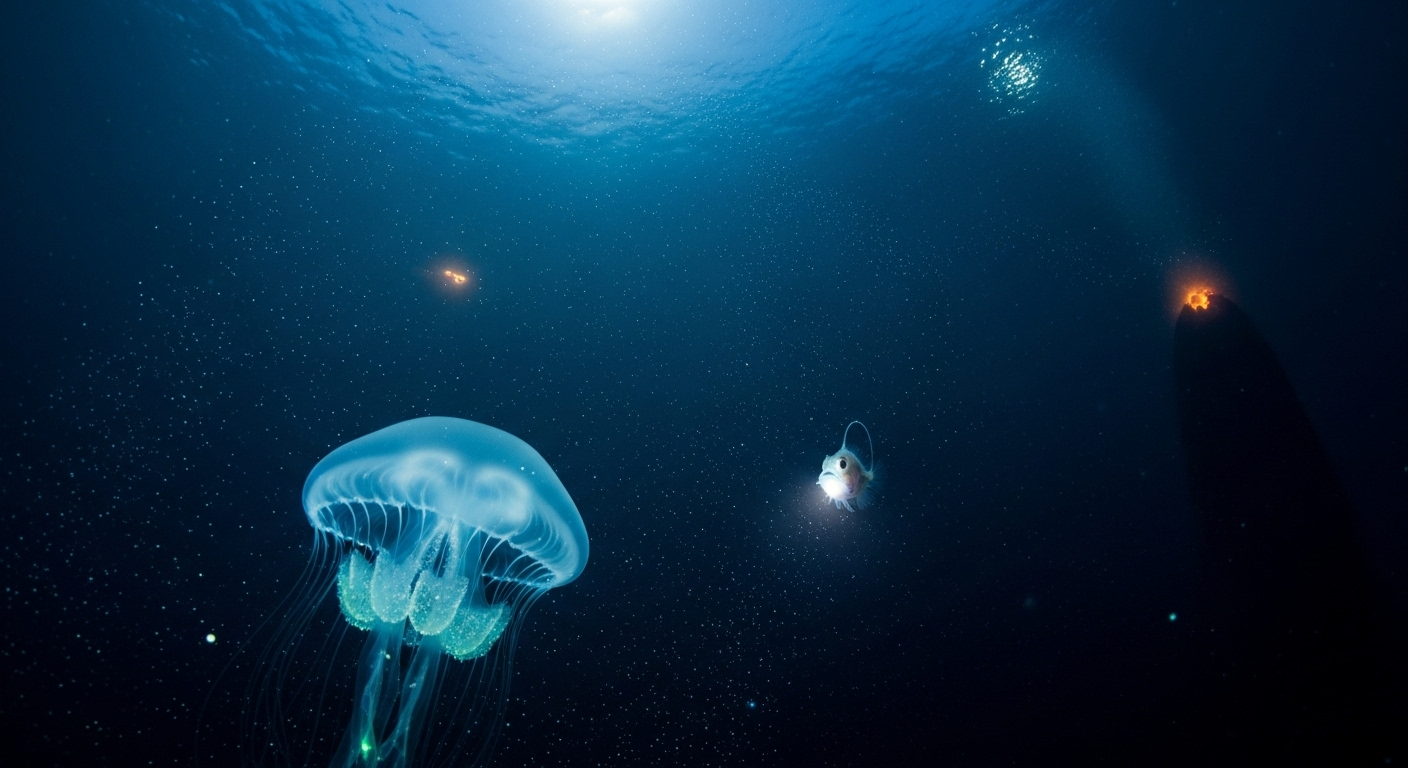Decoding the Enigmatic World of Bioluminescent Marine Life
In the depths of our vast oceans lies a mesmerizing phenomenon that has captivated scientists and nature enthusiasts alike for centuries. Bioluminescence, the ability of living organisms to produce light, is a magical display that illuminates the darkest corners of our seas. This article delves into the fascinating realm of bioluminescent marine creatures, exploring their evolutionary adaptations, ecological significance, and the cutting-edge research that continues to unravel their mysteries.

The Science Behind the Glow
At the heart of bioluminescence lies a complex biochemical process that involves the interaction of two key components: a light-emitting molecule called luciferin and an enzyme called luciferase. When these two substances combine in the presence of oxygen, they trigger a chemical reaction that releases energy in the form of light. This process is remarkably efficient, with nearly all of the energy converted into light rather than heat, making it one of nature’s most impressive feats of energy conservation.
Evolution of Bioluminescence in Marine Ecosystems
Bioluminescence has evolved independently in various marine species over millions of years, serving a multitude of purposes. For some organisms, it acts as a defense mechanism, startling predators or camouflaging them against the dim background light of the deep sea. In other cases, it serves as a means of communication, helping creatures attract mates or lure prey. The diversity of bioluminescent adaptations showcases the incredible ingenuity of nature in solving survival challenges in the vast and often inhospitable marine environment.
Bioluminescent Hotspots: Where to Witness Nature’s Light Show
While bioluminescence occurs throughout the world’s oceans, certain regions are renowned for their spectacular displays. The Mosquito Bay in Vieques, Puerto Rico, is home to one of the brightest bioluminescent bays in the world, where millions of dinoflagellates create a dazzling blue glow with every disturbance in the water. Similarly, the waters off the coast of Tasmania showcase the mesmerizing phenomenon of sea sparkle, caused by bioluminescent algae. These natural wonders have become increasingly popular eco-tourism destinations, with nighttime kayak tours offering visitors a chance to witness this magical spectacle firsthand.
Applications in Biotechnology and Medicine
The study of bioluminescent organisms has led to groundbreaking applications in various fields. Researchers have harnessed the light-producing capabilities of these creatures to develop innovative tools for medical imaging, environmental monitoring, and even potential new energy sources. For instance, the green fluorescent protein (GFP) discovered in jellyfish has revolutionized cellular biology, allowing scientists to track protein expression and cellular processes in living organisms. This breakthrough earned its discoverers the Nobel Prize in Chemistry in 2008 and has since become an indispensable tool in biomedical research.
Conservation Challenges and Future Prospects
As our understanding of bioluminescent marine life grows, so does our awareness of the threats facing these unique ecosystems. Ocean acidification, pollution, and climate change pose significant risks to the delicate balance of marine environments, potentially impacting the survival of bioluminescent species. Conservation efforts are underway to protect these fragile habitats and the remarkable creatures that inhabit them. Ongoing research aims to uncover new species, understand their ecological roles, and develop sustainable ways to harness their bioluminescent properties for the benefit of science and society.
Cutting-Edge Research and Recent Discoveries
The field of bioluminescence research is constantly evolving, with new discoveries pushing the boundaries of our knowledge. Recent studies have revealed previously unknown bioluminescent species in the deep sea, including a type of shark that uses its glow to camouflage itself from predators below. Scientists are also exploring the potential of bioluminescent organisms as indicators of ocean health, using their presence or absence as a measure of environmental quality. These ongoing investigations promise to yield fascinating insights into the intricate workings of marine ecosystems and the role of bioluminescence in shaping life beneath the waves.
In conclusion, the enigmatic world of bioluminescent marine life continues to captivate and inspire. From the microscopic plankton that create swirling patterns of light in coastal waters to the bizarre deep-sea creatures that illuminate the ocean’s darkest recesses, these living light sources offer a glimpse into the wonders of nature’s ingenuity. As we continue to explore and understand these remarkable organisms, we not only unlock the secrets of their luminous lives but also gain valuable insights that may help us address some of the most pressing challenges facing our oceans and our planet.





